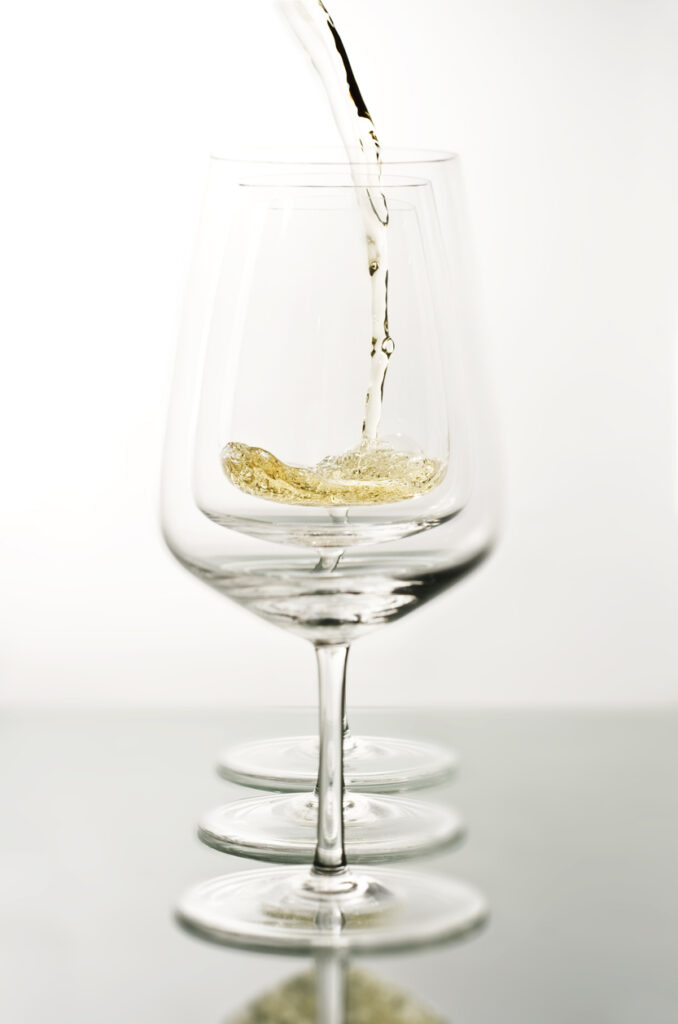Sweet, aromatic, and undeniably seductive – the world of wine is filled with endless possibilities to tantalize our taste buds. Among these possibilities are three distinct varieties that share a common thread: Muscat, Moscatel, and Moscato.
These names may sound similar but make no mistake – each one possesses its own unique character and flavor profile. In this article, we will embark on a journey through the vineyards of these three captivating wines, exploring their differences and uncovering the secrets behind their allure.
The family of Muscat wines
When it comes to wines, there is a fascinating family of varietals known for their aromatic nature and sweetness – the Muscat grape. Within this family, we have three popular members: Muscat, Moscatel, and Moscato wines. While they share similarities in name and heritage, each wine brings its own distinct characteristics to the table.

Muscat
Let’s start with Muscat wines; these are made from the classic variety of the same name that originated in ancient Egypt. Known for its floral aromas, Muscat wines can vary from dry to sweet and are often enjoyed as an aperitif or dessert wine.
Moscatel
On the other hand, Moscatel wines hail from Spain and Portugal and tend to be darker in color than their Muscat counterparts. These wines showcase intense flavors of apricot, orange zest, and honey, offering a perfect balance between sweetness and acidity.

Moscato
Finally, we have Moscato wine – a darling among wine enthusiasts who appreciate its lightness and effervescence. Originating from Italy’s Piedmont region but now produced worldwide, Moscato is renowned for its fruity notes of peach, pear, and orange blossom. Best served chilled as a refreshing drink or paired with desserts like fruit tarts or creamy cheeses.
Which wines are made from Muscat vs Moscatel vs Moscato?
Muscat, Moscatel, and Moscato – three names that might confuse even the most experienced wine connoisseur. While they may sound similar, these three terms actually refer to different types of wines made from the same grape variety: Muscat. Muscat is one of the oldest known grape varieties in the world and is widely grown across various regions.

First up is Muscat, an aromatic grape variety that produces wines with a unique floral and fruity character. Commonly found in France’s Alsace region or Italy’s Asti region, Muscat grapes are used to create a wide range of styles from dry to sweet. The diversity of flavors offered by this varietal makes it a versatile choice for pairing with various cuisines.

Next on our list is Moscatel, which hails from Spain and Portugal. Unlike its French and Italian counterparts, Moscatel tends to produce fortified wines that are rich in flavor and sweetness. These dessert-style wines often exhibit notes of raisins, dried fruits, and honey, making them perfect for sipping after a meal or accompanying desserts.
Sweetness of Muscat vs Moscatel vs Moscato
When it comes to wine, three names that often get confused are Muscat, Moscatel, and Moscato. These three wines share a common grape variety called Muscat, known for its distinct aroma and flavor. However, they each have their own unique characteristics that set them apart.

Firstly, let’s talk about sweetness. Muscat wine typically falls on the sweeter side of the spectrum. Its high sugar content makes it a delightful dessert wine. It can be a refreshing option for those who enjoy a touch of sweetness in their glass, too. On the other hand, both Moscatel and Moscato can offer variations in sweetness levels. Moscato tends to be sweeter than its Spanish counterpart, Moscatel, which often exhibits more dry or off-dry profiles.
Foodpairing of Muscat vs Moscatel vs Moscato
Now let’s explore food pairing with these wines. The natural sweet floral and fruity notes present in all three make them incredibly versatile when it comes to culinary companionship. A glass of Muscat is an excellent choice alongside creamy desserts like crème brûlée or fruit tarts with custard fillings. For those indulging in savory dishes, try pairing your meal with a bottle of Moscato. Its light effervescence complements spicy Asian cuisine or creamy cheeses beautifully. Finally, don’t overlook the potential of Moscatel’s drier version. It pairs superbly well with seafood dishes such as grilled prawns or oysters on the half shell.

Alcohol content of Muscat vs Moscatel vs Moscato
While these wines may share similarities in terms of taste and aroma, it’s important to note some differences in alcohol content. Generally speaking, Muscat tends to have a higher alcohol level compared to both Moscatel and Moscato. This discrepancy stems from variations in production methods and regional preferences. However, it’s worth mentioning that all three wines typically fall within the range of 5-15% alcohol by volume (ABV). This makes them relatively light compared to bolder red wines or fortified varieties.

Calorie content of Muscat vs Moscatel vs Moscato
Another factor worth considering when exploring these wines is their calorie content. Due to their inherent sweetness, Muscat, Moscatel, and Moscato tend to be higher in calories compared to drier white wines like Sauvignon Blanc or Chardonnay. Exact figures vary depending on specific brands and styles within each category of wine. It’s safe to say that indulging in a glass of any one of these three will provide a delightful sensory experience with only a moderate impact.
Differences of Muscat vs Moscatel vs Moscato
Muscat, moscatel, and moscato – three names that may sound similar. They refer to distinct varieties of wine with their own unique characteristics. Muscat is a broad term used to describe a family of grape varieties known for their intense floral and fruity aromas. It is widely cultivated in various regions around the world, producing wines that range from bone-dry to sweet and fortified.

On the other hand, Moscatel primarily refers to a specific variety of muscat grape grown mainly in Spain and Portugal. Wines made from this grape tend to be rich and luscious, often with notes of honey or dried fruit. Moscatel can also be produced as a fortified wine, resulting in higher alcohol content and an even fuller flavor profile.
Lastly, Moscato is an Italian variation of the muscat grape variety that has gained popularity for its light-bodied and semi-sweet nature. This sparkling or still wine offers refreshing flavors of peach, apricot, and orange blossom. Often low in alcohol content, it makes for an excellent pairing with desserts or a refreshing summer sipper on its own.

In summary, while all three – Muscat, moscatel, and moscato – share common origins as members of the muscat grape family. They each offer distinctive taste profiles based on where they are grown and how they are crafted into wine. Whether you prefer the vibrant intensity of Muscat’s aromatic range or delight in the indulgent sweetness found in moscatel wines from
Conclusion
In conclusion, while Muscat, moscatel, and moscato may share a common heritage and certain flavor profiles, they are distinct in terms of their origins, production methods, and regional characteristics. Muscat is a versatile grape used to produce a wide range of wines around the world,. These wines showcase floral aromas and fruity flavors.

Moscatel is known for its sweet and fortified style, originating from Spain and Portugal. Moscato is a light-bodied wine with slight effervescence, popularized in Italy and often enjoyed as a dessert or sparkling wine. Whether you prefer the elegant complexities of Muscat, the richness of moscatel, or the refreshing sweetness of moscato, exploring these varietals can be a rewarding experience

